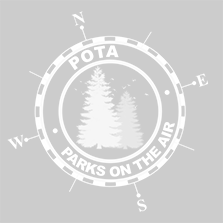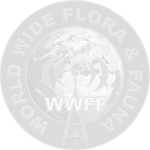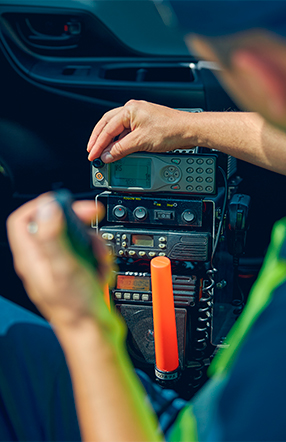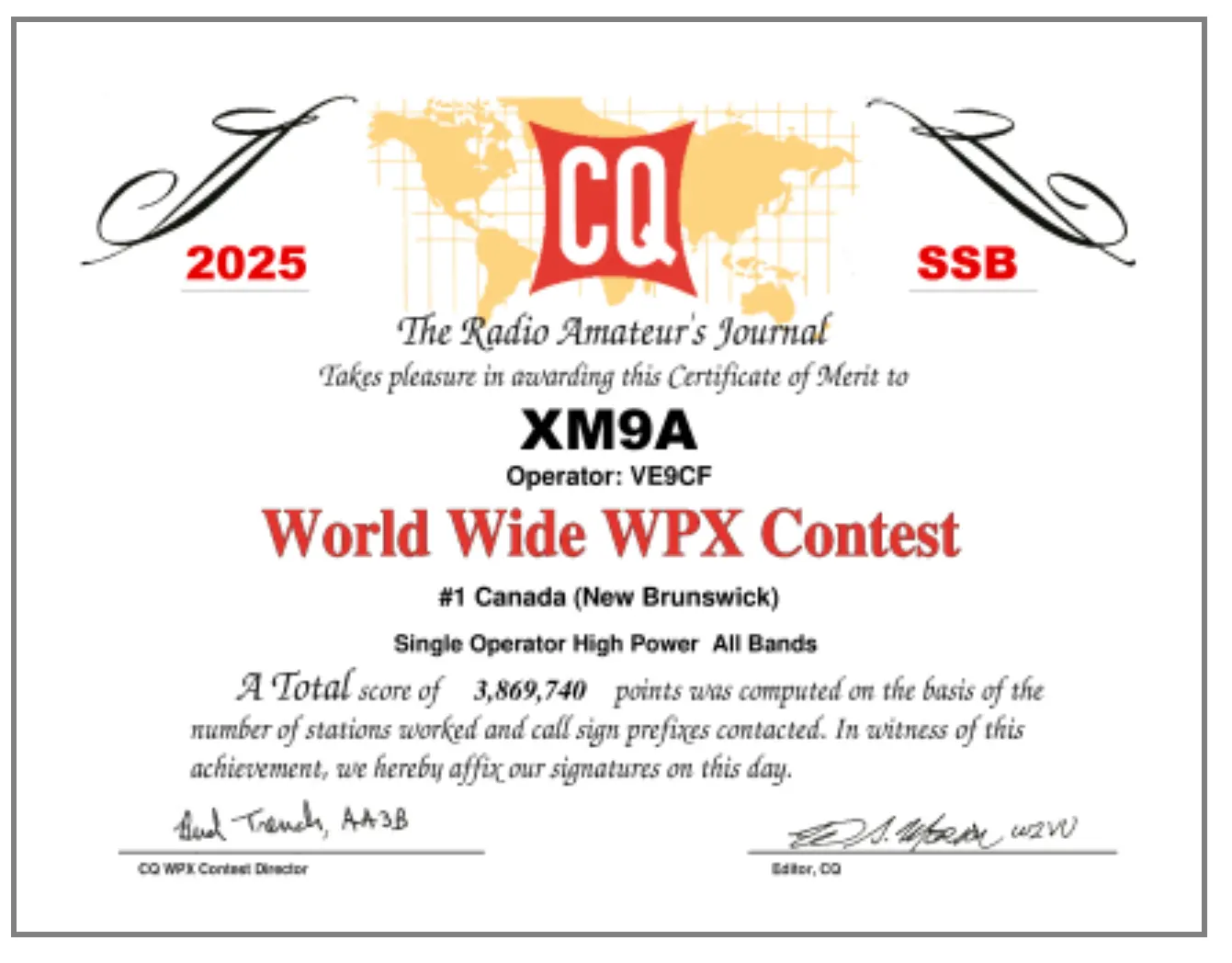How Does Long Path Communications Affect Ham Radio On The HF Bands? Understanding Propagation Challenges and Opportunities
Ham radio enthusiasts know that signals can travel in two directions around our spherical Earth - the shorter direct path and the longer route going the opposite way around the globe. Long path propagation often provides stronger and clearer signals than the short path during certain times of day, mainly when the path is mostly in daylight for higher bands or darkness for lower bands. This phenomenon can dramatically expand your communication range and help you connect with operators in difficult-to-reach locations.
When working DX (distant stations) on HF bands, understanding long path propagation advantages can be your secret weapon for making those rare contacts. The long path might seem counterintuitive - why would a signal travelling farther be stronger? These paths often experience less signal loss than typical multihop propagation on the short route, especially when ionospheric conditions are favourable along that path.
To identify potential long path openings, pay attention to grey line propagation and learn to recognize when stations are coming in via the long path. Their signals often have a distinctive sound and arrive from an unexpected direction - typically the opposite of what you'd expect. With practice, you'll develop an instinct for when to point your antenna in the opposite direction to make those challenging contacts.
Key Takeaways
- Long path signals can often be stronger than short path communications despite travelling greater distances around the Earth.
- The best times for long path propagation typically occur when the path is mostly in daylight for higher HF bands or darkness for lower bands.
- Recognizing and utilizing long path openings requires understanding grey line propagation, antenna directionality, and listening for signals from unexpected directions.
Fundamentals of Ham Radio on the HF Bands
The HF (High-Frequency) bands form the backbone of long-distance amateur radio communications, offering unique propagation characteristics that make global contacts possible. These frequencies between 3-30 MHz provide the foundation for both short-path and long-path DX communications.
Understanding Ham Radio
Ham radio, formally known as amateur radio, enables licensed operators to communicate across vast distances without commercial infrastructure. You must pass licensing exams that test your knowledge of regulations, operating procedures, and technical concepts.
Your equipment typically includes a transceiver, antenna system, and various accessories. Modern transceivers offer digital signal processing and computer interfaces, though many operators still enjoy using traditional modes like CW (Morse code).
The amateur radio community is built on principles of self-training, technical investigation, and emergency communication readiness. When you become a ham operator, you join a worldwide community that shares knowledge and experiences.
Ham radio serves crucial roles during disasters when conventional communications fail. Your ability to operate independently of infrastructure becomes invaluable during emergencies.
The Role of HF Bands in Long Path Communications
The HF spectrum (3-30 MHz) enables long-distance DX communications through unique propagation characteristics. These bands include 80m, 40m, 20m, 15m, and 10m, each with distinct behaviors that change throughout the day, seasons, and solar cycle.
HF bands support both short path (the direct great circle route) and long path propagation, which follows the longer route around the globe. Long path often provides stronger signals when short path conditions are poor.
Signal propagation on HF occurs primarily through:
- Ground waves: Following the Earth's surface
- Sky waves: Bouncing between the ionosphere and Earth
- Ionospheric refraction: Allowing signals to travel beyond the horizon
The 20m band (14 MHz) is particularly valuable for long-path DX, offering reliable performance throughout the solar cycle. Higher bands, like 15m and 10m during peak solar activity, excel at long-path communications.
Characteristics of HF Radio Waves
HF radio waves exhibit distinctive behaviours that make them ideal for global communications. They can travel thousands of kilometres by bouncing between the Earth's surface and ionosphere – a process called ionospheric propagation or "skip."
The ionosphere has several layers (D, E, F1, and F2) that affect radio waves differently. The F layers, especially F2, are most important for long path DX contacts. These layers vary in height and density based on solar radiation.
Signal characteristics on HF include:
- Wavelength: Ranging from 10-100 metres
- Propagation: Highly dependent on time of day, season, and solar activity
- Fading: Signal strength variations due to multipath effects
The different HF bands display unique characteristics. Lower bands like 80m and 40m work best at night, while higher bands like 10m and 15m perform optimally during daylight hours. This behaviour varies seasonally, with winter typically offering better nighttime low-band conditions.
Concept of Long Path Propagation
Radio signals in the HF spectrum can travel around the Earth differently, with long path propagation offering unique opportunities for amateur radio operators to make distant contacts. This phenomenon occurs when signals travel the longer route around the globe rather than taking the more direct path.
Definition and Basic Principles
Long path propagation refers to radio signals travelling the longer route around the Earth between two stations. When communicating with a station, you have two possible paths: the shorter, more direct route (short path) and the longer route in the opposite direction (long path). This longer path is approximately 40,000 km, minus the short path distance.
Long path propagation can significantly enhance DX (long-distance) communications by offering stronger signals and clearer transmissions in certain conditions. This occurs because radio waves follow the curvature of the Earth, bouncing between the ionosphere and Earth's surface.
You'll recognize long path contacts when signals come from a direction opposite to the expected bearing. For example, if you're in Canada trying to contact Australia, you might get better results pointing northeast instead of pointing your antenna southwest.
Differences Between Long Path and Short Path Propagation
The most apparent difference between long and short path is the distance signals travel. The short path follows the most direct route between stations, while the long path takes the "scenic route" around the opposite side of the globe.
Signal strength often varies between paths. Surprisingly, long-path signals can sometimes be stronger than short-path ones despite travelling further. This counterintuitive phenomenon occurs because the long path may encounter more favourable ionospheric conditions.
Timing is another key distinction. Long path openings typically occur at different times than short path, giving you additional contact opportunities. These openings often happen during grey line periods (dawn and dusk) when the ionosphere transitions.
Signal characteristics also differ. Long path signals may exhibit distinctive fading patterns, different arrival angles, and unique polarization characteristics compared to short path signals.
Factors Affecting Long Path Propagation
Solar activity significantly impacts long path propagation. Higher solar flux generally improves long path opportunities on higher bands (10m, 12m, 15m), while lower solar activity may favour lower bands.
The time of day is crucial, with long path contacts often possible when the path is mostly in daylight for higher bands or darkness for lower bands. Dawn and dusk periods (grey line) are particularly effective as they create ionospheric conditions favourable for long path.
Geographic location affects your long path potential. Stations at mid-latitudes often enjoy good long path opportunities, while polar paths may be more challenging due to auroral activity.
The frequency you choose matters exceptionally. Higher HF bands (14-28 MHz) typically work better for long path during daylight hours, while lower bands (1.8-7 MHz) perform better during darkness along the path.
Seasonal variations also play a role, with equinoxes (March/September) traditionally offering the best long path conditions due to the balanced illumination of both hemispheres.
Equipment and Adjustments for Long Path Communication
Successful long path DX communication requires specific equipment configurations and technical adjustments that differ from standard short path operations. Long path propagation in amateur radio offers enhanced DX opportunities but demands careful setup.
Antenna Requirements and Configurations
Directional antennas are crucial for effective long path operations. Yagi beams and quad antennas with rotators allow you to aim precisely at the bearing needed for long path propagation, typically 180° opposite from the short path direction.
Consider installing wire antennas like dipoles and G5RVs at optimal heights (at least ¼ wavelengths high) and orientations that favour your target long-path regions for limited-space setups.
Multi-band vertical antennas can be surprisingly effective for long paths when paired with a good radial system, especially for low-angle radiation that is needed for distant contacts.
Key antenna considerations:
- Higher gain antennas improve long path signals significantly
- Lower radiation angles (3-15°) are ideal
- A good ground system enhances performance
- Reduced interference from obstructions makes long path signals clearer in some cases
Transceiver Adjustments for Optimal Performance
Your transceiver settings need specific adjustments for successful long-path work. To improve the signal-to-noise ratio, set your receiver bandwidth narrower (300-500 Hz for CW, 1.8-2.1 kHz for SSB).
Use DSP noise reduction and notch filtering aggressively to extract weak signals from the noise floor. Disable your RF gain and adjust it manually rather than relying on AGC alone.
Monitor propagation using tools like PSKreporter or band scopes to identify when the long path is opening. Modern transceivers with waterfall displays help tremendously in spotting weak long path signals.
Optimal modes for long path:
- CW (often penetrates poor conditions best)
- Digital modes (FT8, FT4)
- SSB (requires better conditions)
Remember to adjust your timing - long path propagation signals may become stronger at different times than short path openings to the same region.
Role of Tuners and Amplifiers
An efficient antenna tuner enables you to match your antenna system precisely across multiple bands, which is crucial when chasing long path openings that may shift between frequencies. External tuners generally offer better performance than built-in units.
Linear amplifiers significantly improve your long path success rate. Even modest 500-600-watt amplifiers can distinguish between a failed and successful contact when signals are marginal.
Use your amplifier judiciously—improve your antenna system before relying solely on power. Working DX via the Long Path requires patience and persistence rather than raw power.
Essential accessories:
- Accurate SWR/power meter
- High-quality feedlines with minimal loss
- RF-tight station grounding system
- Bandpass filters to reduce interference
- Sequencers if using amplifiers and receive preamps
Influence of Ionospheric Conditions on Long Path Signals
The ionosphere dramatically shapes how radio signals travel along long path routes. Its varying layers and electron density directly determine when and how well your signals can reach distant stations on the opposite side of the globe.
Solar Cycle Impact on Signal Quality
The 11-year solar cycle profoundly affects your long path communications on HF bands. During solar maximum periods, increased ionization creates higher Maximum Usable Frequencies (MUFs), enabling reliable long path propagation on higher bands like 15, 12, and 10 metres.
At solar minimum, lower ionization levels mean you'll generally have better results on lower bands such as 40, 80, and 160 metres for long path contacts. The consistency of F-layer ionization varies substantially between these cycle extremes, affecting HF radio signals across different latitudes.
Signal quality often improves during moderate solar flux periods (SFI 100-150), providing sufficient ionization without excessive absorption or disturbance. You'll notice this most dramatically at dawn and dusk when the terminator line creates optimal conditions for long path communications.
Understanding Sporadic E and F Layers
Sporadic E clouds can dramatically enhance your long path signals, providing unexpected openings on higher frequencies. These dense, patchy ionization areas appear seasonally, peaking in summer months in each hemisphere.
The F layers (F1 and F2) are the primary mechanism for long-distance radio communication, especially along long paths. F2 layer height fluctuates between 250-400 km, varying with:
- Time of day
- Season
- Solar activity
- Geographic location
When the F layer electron density is optimal, your signals can hop multiple times between the ionosphere and Earth, enabling contacts exceeding 20,000 km. MulMultihopopagation requires proper signal angles and sufficient electron density to refract waves back to Earth across multiple reflection points.
Real-Time Ionospheric Observations for Communication Planning
You can significantly improve your long path success rate by monitoring real-time ionospheric conditions. Online resources like HF propagation condition maps provide critical insight into band openings and signal paths.
Key indicators to track include:
- Solar Flux Index (SFI): Higher values (>150) generally improve F-layer propagation
- K-index/A-index: Lower values (<3) indicate stable conditions favourable for long path
- Electron density maps: Show real-time MUF variations across global regions
Sudden Ionospheric Disturbances (SIDs) and polar cap absorption events can entirely disrupt your long path communications. These events, often caused by solar flares, can block HF communications at high latitudes for hours or days.
Prediction tools like VOACAP, PropView, and DX Atlas help you forecast optimal times and frequencies for specific long path routes based on current solar conditions and seasonal factors.
Operational Techniques and Best Practices
Successfully working long path DX requires specific techniques and careful planning to maximize your chances of making those challenging contacts. The right timing, antenna configuration, and record-keeping can dramatically improve your results.
Timing for Long Path Communication Attempts
Long path propagation follows predictable patterns that you can use to your advantage. The optimal time for long path contacts typically occurs around sunrise and sunset at the midpoint of the path between your location and the target station.
For morning long path openings, begin listening about 30 minutes before your local sunrise and continue for up to 2 hours after. Evening openings often start about 2 hours before sunset and may extend until 30 minutes after dark.
Use tools like HF propagation charts to predict openings. The 20m, 17m, and 15m bands are particularly effective for long path work, with 20m often being reliable year-round.
Remember that seasonal variations affect long path conditions. Equinox periods (March/April and September/October) typically offer the best opportunities for working unusual long path DX.
Angle of Radiation and Its Importance
Your antenna's radiation pattern plays a crucial role in long path success. Long path signals require a low radiation angle to achieve the extended bounces through the ionosphere needed for these distant paths.
Horizontal dipoles should be installed at least a half-wavelength high (or higher) to lower the radiation angle. Yagi antennas mounted at 15+ metres provide excellent low-angle radiation for working long path DX.
Consider that antenna height significantly impacts communications effectiveness for long path work. The ideal setup includes directional antennas that can be rotated to point along the long path bearing.
Vertical antennas with good radial systems can also be effective for long path work due to their naturally low radiation angle. For improved long path reception, consider using phased arrays or dedicated receiving antennas to reduce noise.
Effective Logging and QSL Card Management
Maintaining detailed logs of your long path contacts enhances your operating experience and provides valuable data for future attempts. Record not just the basics but also propagation conditions and antenna configurations used.
Essential information to log:
- Date and time (UTC)
- Frequency and mode
- Signal reports (both ways)
- Weather conditions
- Solar flux index/A-index/K-index
- Path used (specifically note "LP" for long path)
Digital logging software can help track your long path DX achievements and identify patterns in your successful contacts. This data becomes invaluable for planning future operations.
For QSL confirmations, indicate "Long Path" on your cards. Consider using electronic QSL services like Logbook of the World or eQSL alongside traditional cards to ensure your rare long path contacts are correctly documented and count towards awards.
Challenges and Limitations of Long Path Communications
While long path propagation can offer exciting opportunities for DX contacts, it presents several unique challenges that radio operators must navigate to achieve successful communications.
Interference and Noise Considerations
Long path signals typically travel greater distances than short path, making them more susceptible to various forms of interference. Atmospheric noise increases significantly at lower frequencies, particularly during summer months and in tropical regions.
You'll often encounter QRM (man-made interference) and QRN (natural noise) that can severely degrade signal quality on long path routes. Signal loss on multi-hops can be substantial, requiring careful frequency selection and timing.
Solar flares and geomagnetic storms can disrupt the ionosphere, making long path communications unpredictable or impossible for hours or days. These disturbances affect higher latitudes more severely, sometimes creating total blackouts.
Digital modes like FT8 have become valuable tools for overcoming noise issues, allowing decoding of signals well below the noise floor that would be impossible with traditional modes.
Power and Legal Limitations
Your transmitter power output faces strict regulations that vary by country and license class. This presents a particular challenge for long path DX where signal strength is crucial.
Canadian amateurs are limited to 1000 watts of PEP output on most HF bands, which may be insufficient for reliable long-path communications during marginal conditions. You must carefully consider band conditions before attempting long path contacts.
Antenna restrictions in urban environments can further limit your ability to establish effective long path communications. HOA regulations and municipal bylaws often restrict antenna height and visibility.
You can mitigate power limitations by investing in high-gain directional antennas like Yagis or hex beams, which focus your signal in specific directions for more effective long path propagation.
Overcoming Geographic Constraints
Your geographic location significantly impacts long path propagation success. Northern latitude stations experience more challenging conditions due to auroral interference and polar path disruptions.
HF band's capabilities vary widely depending on your location relative to major population centres. You might need specialized equipment to overcome these constraints, mainly if your station is remote.
Mountain ranges, large bodies of water, and other geographic features can create attenuation or enhancement effects on long path signals. Urban environments introduce unique challenges with higher noise floors.
Timing becomes crucial as long path openings may only last minutes depending on seasonal factors and solar conditions. You'll need to develop knowledge of grey line propagation—when day meets night—as these transitional periods often provide optimal conditions for long path DX communications.
The Future of Ham Radio and Long Path Communications
The landscape of ham radio is evolving rapidly with technological innovations that enhance long path DX capabilities. These advancements will reshape how operators leverage ionospheric conditions while maintaining amateur radio's crucial role in emergency communications and knowledge transfer.
Technological Advancements and Trends
Software-defined radio (SDR) technology is revolutionizing ham radio operations by making sophisticated equipment more accessible and affordable. You can now monitor long path propagation using digital tools that predict optimal transmission times more accurately. These innovations are shaking up a hobby long associated with engineering.
Automated antenna systems now allow quick adjustments to target extended path opportunities as they emerge. This means you can capitalize on those fleeting moments when long path signals might be stronger than short path.
AI-driven propagation forecasting tools are becoming more sophisticated, giving you precise windows when long path communications are most likely to succeed. These tools analyze real-time ionospheric data to suggest optimal frequencies and directions.
Remote operation capabilities continue to improve, allowing you to participate in long path DX without maintaining extensive antenna farms. This democratizes access to the hobby for operators with limited space.
The Role of Amateur Radio in Emergency Situations
Ham radio's reliability during emergencies remains unmatched, with long path communications offering crucial redundancy when primary paths fail. You can establish contact with distant regions when conventional channels are compromised.
Long path propagation provides alternative communication routes during disasters that might disrupt typical communication paths. This capability is particularly valuable when reaching isolated areas requiring international assistance.
Training exercises increasingly incorporate long path scenarios to prepare operators for real-world emergency situations. You'll find that understanding propagation fundamentals becomes essential when standard operating procedures must adapt to challenging conditions.
Emergency response networks now integrate amateur radio operations that leverage both short and long path propagation to maximize communication resilience. This comprehensive approach ensures message delivery when it matters most.
Education and Skill Development for the Next Generation
Interactive learning platforms now make understanding complex propagation concepts more accessible to newcomers. You can visualize how signals travel along the long path through engaging simulations and real-time demonstrations.
Mentorship programs pair experienced operators with beginners to share knowledge about identifying and utilizing long path opportunities. These relationships help preserve institutional knowledge while introducing fresh perspectives.
Contest participation offers hands-on experience with long path DX, providing immediate feedback on technique and station performance. You'll find that working stations via the long path during competitions rapidly builds practical skills that theory alone cannot teach.
Online communities facilitate knowledge sharing about current band conditions and propagation anomalies. You can receive alerts when unusual long path openings are detected, creating learning opportunities that previous generations of operators could only discover through chance.

